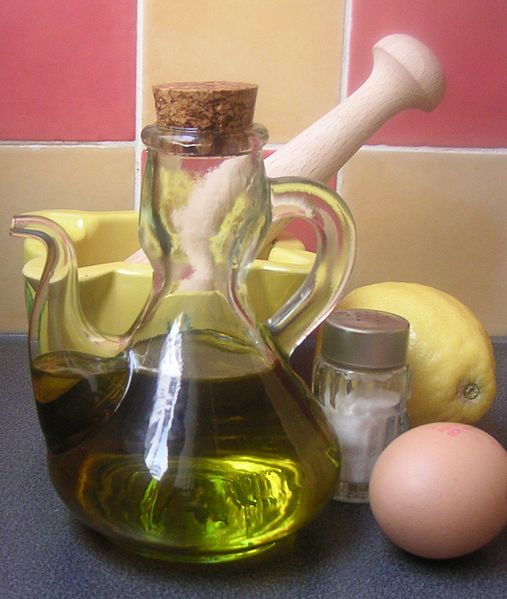Processed cheese is a product made from cheese mixed with an emulsifying agent. Additional ingredients, such as vegetable oils, unfermented dairy ingredients, salt, food coloring, or sugar may be included. As a result, many flavors, colors, and textures of processed cheese exist. Processed cheese typically contains around 50 to 60% cheese and 40 to 50% other ingredients.
A 5-pound block of Provel "pasteurized process cheddar, swiss, and provolone cheese"
Cheese spreads, such as this one, may be considered processed cheese in the broad sense
Cheez Whiz is a processed cheese used for dips and Philadelphia cheesesteaks
Slices of processed cheese
An emulsion is a mixture of two or more liquids that are normally immiscible owing to liquid-liquid phase separation. Emulsions are part of a more general class of two-phase systems of matter called colloids. Although the terms colloid and emulsion are sometimes used interchangeably, emulsion should be used when both phases, dispersed and continuous, are liquids. In an emulsion, one liquid is dispersed in the other. Examples of emulsions include vinaigrettes, homogenized milk, liquid biomolecular condensates, and some cutting fluids for metal working.
An example of the ingredients used to make mayonnaise; olive oil, table salt, an egg (for yolk) and a lemon (for lemon juice). The oil and water in the egg yolk do not mix, while the lecithin in the yolk serves as an emulsifier, allowing the two to be blended together.





